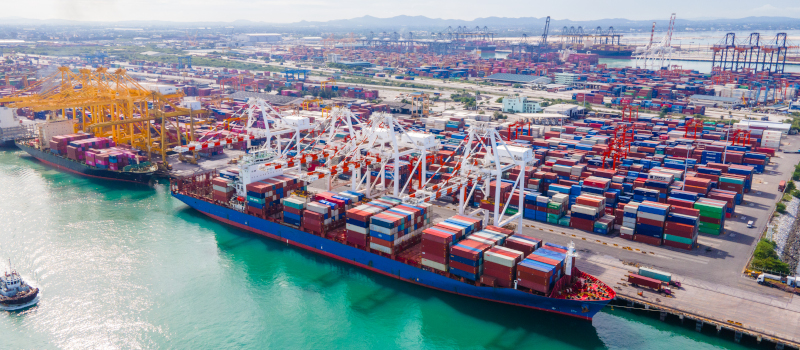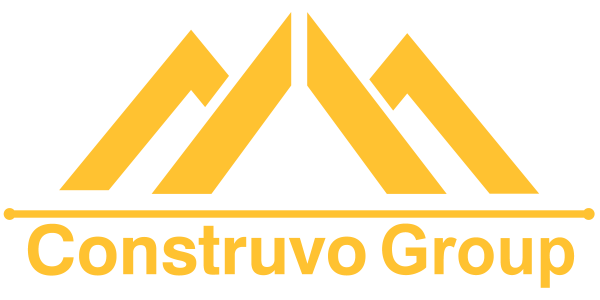Services
Marine Structures
Construvo designs and develops port facilities, coastal protection systems, and offshore infrastructure that connect nations to global trade networks while protecting vulnerable coastlines. Our marine projects combine civil engineering excellence with environmental sensitivity to create sustainable interfaces between land and sea.
Our capabilities encompass deep-water ports and cargo handling facilities, passenger terminals and tourism infrastructure, coastal protection and climate adaptation structures, offshore energy support facilities, and aquaculture and marine resource development infrastructure.

We integrate climate resilience into all marine designs, accounting for sea level rise, increased storm intensity, and changing coastal dynamics. Our financing structures reflect the long operational life of marine assets, with mechanisms to address both upfront capital requirements and ongoing maintenance needs.
Our port development portfolio encompasses a wide range of facilities tailored to specific cargo and operational requirements. We design and construct container terminals with efficient loading/unloading systems and storage yards; bulk cargo facilities for commodities such as grain, coal, and minerals; liquid bulk terminals for petroleum products and chemicals; roll-on/roll-off (RoRo) terminals for vehicle transport; multipurpose berths that can accommodate diverse cargo types; passenger terminals for cruise ships and ferries; and specialized facilities for fisheries and small craft. Each port is designed with careful consideration of vessel characteristics, cargo handling requirements, and landside transportation connections.
Our coastal protection solutions combine traditional engineering approaches with nature-based systems to create resilient shorelines. We design and implement breakwaters, seawalls, and revetments that shield coastal communities and infrastructure from wave action and storm surge. We develop beach nourishment programs that maintain recreational areas while providing natural protection. Our living shoreline projects incorporate mangroves, salt marshes, and coral reef restoration to enhance ecological value while providing wave attenuation. We also implement comprehensive coastal zone management plans that address erosion, flooding, and habitat preservation through integrated approaches that balance development needs with environmental protection.
Our offshore infrastructure capabilities include facilities that support various maritime and energy activities. We develop offshore terminals for oil and gas transfer, including single point mooring systems and floating storage and regasification units. We design and construct support facilities for offshore renewable energy, including installation ports, maintenance bases, and cable landing sites for wind, wave, and tidal energy projects. Our marine infrastructure portfolio also includes artificial islands for various purposes, submarine pipeline landfalls, telecommunications cable landing stations, and research platforms. Each offshore project addresses the unique challenges of the marine environment through specialized design, materials, and construction techniques.
Environmental protection is integrated throughout our marine project lifecycle. We conduct comprehensive marine ecological assessments to understand baseline conditions and potential impacts. Our designs incorporate features to minimize disruption to marine habitats, such as fish-friendly structures, marine mammal protection measures, and turbidity control systems. We implement advanced dredging techniques that minimize sediment dispersion and habitat disturbance. For port facilities, we develop comprehensive environmental management systems including waste handling, ballast water management, and spill prevention. We also create habitat enhancement and restoration programs that offset unavoidable impacts, often resulting in net ecological gain through creation of artificial reefs, seagrass transplantation, and wetland restoration.
Our marine structures incorporate comprehensive climate adaptation measures to ensure long-term resilience. We conduct detailed climate vulnerability assessments that analyze sea level rise projections, changing storm patterns, and other climate impacts specific to each location. Our designs include adaptive features such as elevated infrastructure, flood-resistant materials and systems, and staged adaptation pathways that allow for future modifications as conditions change. For ports, we implement flexible operational systems that can accommodate changing water levels and weather conditions. We also develop nature-based solutions that enhance natural protective features while providing ecological benefits. Our approach emphasizes robust risk assessment, redundancy in critical systems, and design flexibility to address both current needs and future climate scenarios.
Construvo is committed to developing marine infrastructure that balances economic development with environmental stewardship and climate resilience. Our integrated approach creates sustainable interfaces between land and sea that serve human needs while respecting natural systems. Contact us to discuss how our marine infrastructure expertise can support your coastal development goals.
Site Investigation & Conceptual Design
We begin with comprehensive site investigations including bathymetric surveys, geotechnical studies, metocean data collection, and environmental baseline assessments. Our team analyzes maritime traffic, cargo projections, or coastal dynamics depending on the project type. We develop conceptual designs that address functional requirements while respecting environmental constraints. This phase includes stakeholder consultations, preliminary environmental impact assessment, and initial permitting strategy to establish a solid foundation for project success.
Detailed Engineering & Construction
Our engineering teams develop detailed designs for all marine structures, including hydrodynamic modeling, structural analysis, and material specification. For port projects, this includes quay walls, breakwaters, dredging plans, and landside facilities. For coastal protection, we design appropriate structures based on wave conditions and shoreline characteristics. During construction, we implement specialized marine construction techniques including careful sequencing to minimize environmental impacts. Our quality control systems address the unique challenges of building in marine environments.
Commissioning & Long-term Management
Following construction, we conduct comprehensive testing and commissioning of all marine systems. For ports, this includes equipment testing, operational readiness verification, and safety system validation. We develop maintenance protocols tailored to the marine environment, addressing issues such as corrosion, biofouling, and sediment management. We establish environmental monitoring programs to track facility performance and ecosystem health. Our long-term management approach includes adaptive strategies that respond to changing conditions, ensuring sustainable operation throughout the infrastructure's lifecycle.
